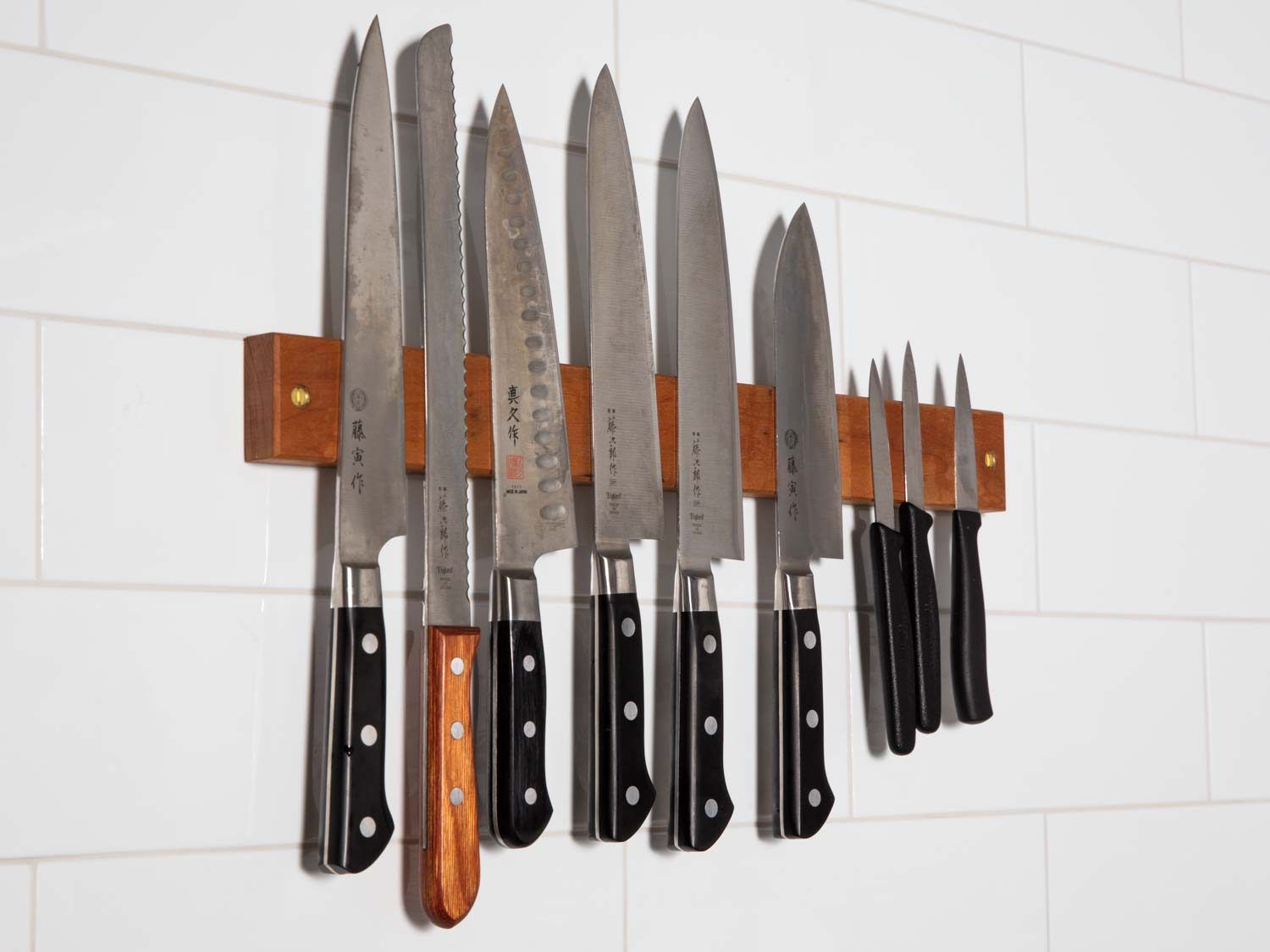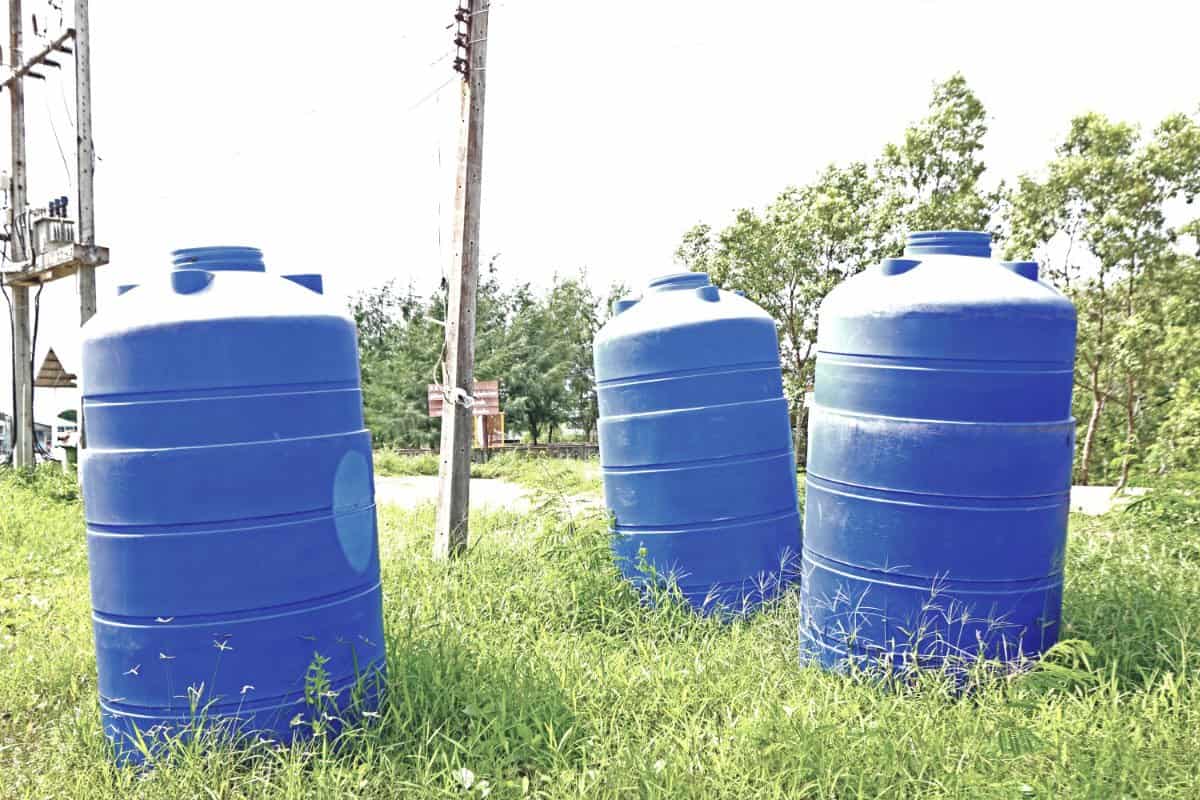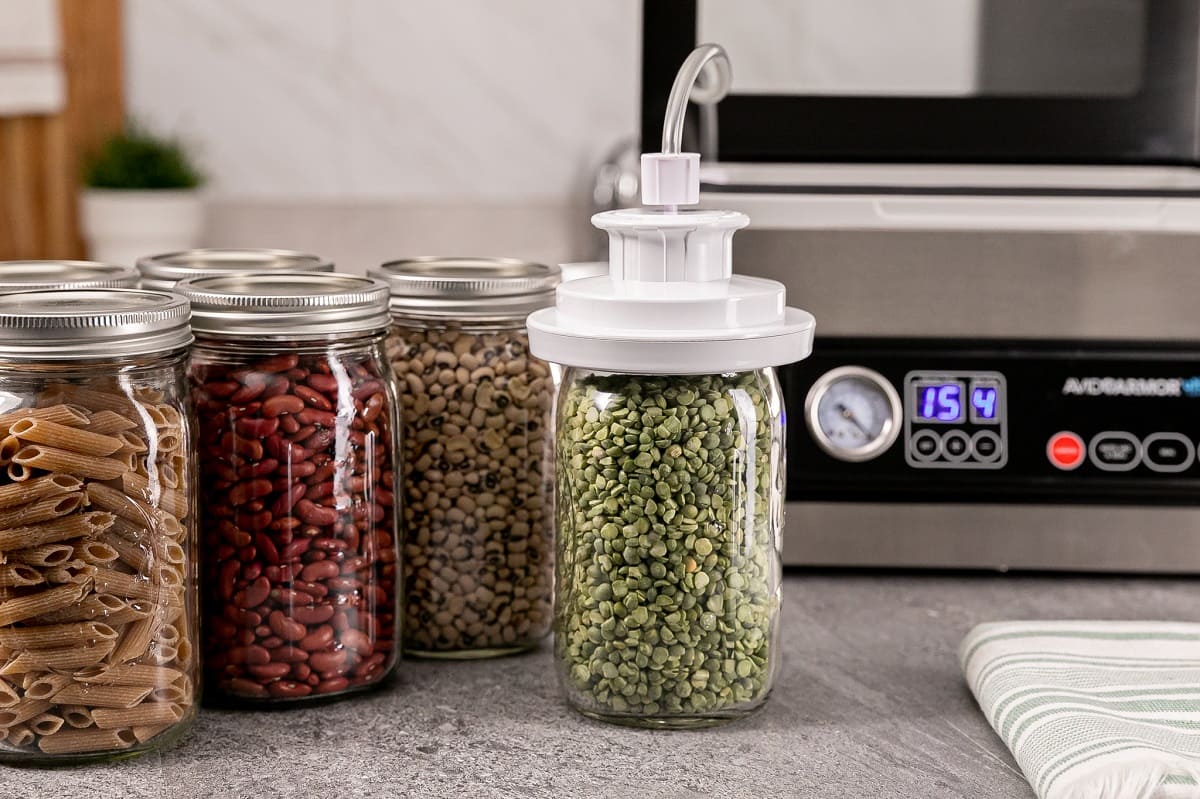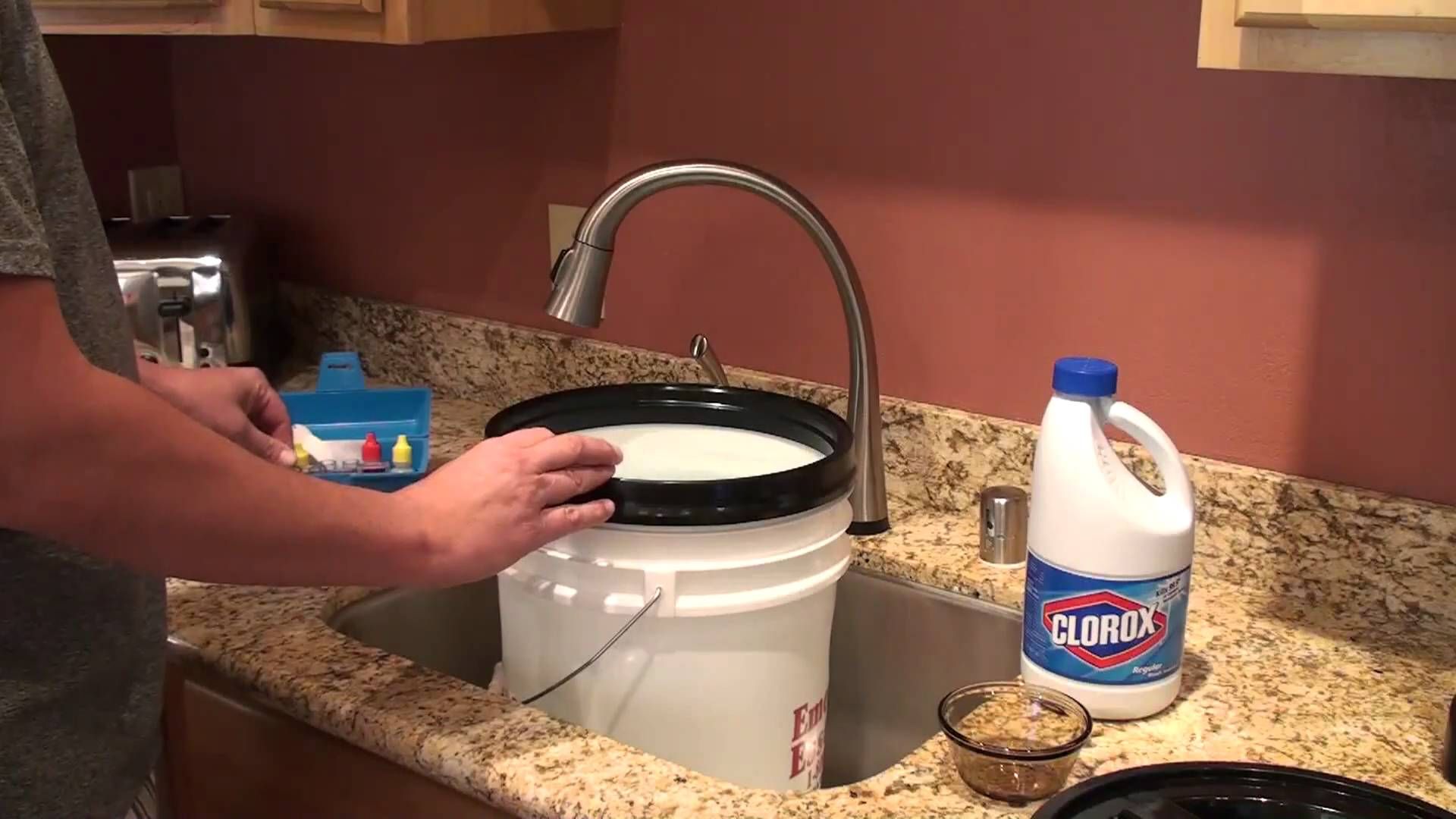

Articles
How To Store Books For Long Term Storage
Modified: August 17, 2024
Learn effective techniques and strategies for storing articles and books to ensure long term preservation and protection. Discover tips for proper organization and maintenance.
(Many of the links in this article redirect to a specific reviewed product. Your purchase of these products through affiliate links helps to generate commission for Storables.com, at no extra cost. Learn more)
Introduction
Books are precious treasures that hold knowledge, stories, and memories. Whether you’re a book lover with a growing collection or someone who wants to store books for future generations, proper long-term storage is crucial to ensure their preservation. Books can be susceptible to damage from factors like moisture, heat, light exposure, pests, and physical mishandling.
In this article, we will guide you on how to store books for long-term storage. We’ll cover everything from selecting the right storage area to maintaining optimal storage conditions and preventing damage. By following these steps, you can protect your books and keep them in excellent condition for years to come.
Key Takeaways:
- Preserve your book collection by selecting the right storage area, cleaning and preparing the books, and choosing acid-free containers. Regularly check and rotate your books to maintain their quality and prevent damage.
- Safeguard your books from pests and damage by maintaining optimal storage conditions, preventing infestations, and handling and moving them with care. Proper long-term storage ensures the longevity of your cherished book collection.
Read more: How To Store Children’s Books Long Term
Selecting the Right Storage Area
When it comes to storing books for the long term, choosing the right storage area is essential. Here are some factors to consider:
- Avoid excessive exposure to sunlight: Direct sunlight can fade book covers and damage pages over time. Select a storage area that is away from windows or install curtains or blinds to block out the sunlight.
- Control the temperature: Fluctuations in temperature can cause books to deteriorate. It is best to store books in a cool and dry environment with a consistent temperature ranging between 60°F and 70°F (15°C and 21°C).
- Ensure proper ventilation: Adequate airflow is crucial to prevent the growth of mold and mildew. Avoid storing books in damp or humid areas such as basements or attics that are prone to moisture issues.
- Avoid areas prone to pests: Book-eating insects like silverfish and bookworms can wreak havoc on your collection. Choose a storage space that is free from pests or take preventive measures against them.
- Consider security: If your book collection holds significant financial or sentimental value, it’s important to consider security measures such as locking cabinets or utilizing a locked room.
By carefully selecting a suitable storage area, you can minimize the risk of damage caused by environmental factors and ensure the longevity of your books.
Cleaning and Preparing the Books
Before storing your books for the long term, it’s important to clean and prepare them properly. Here are some steps to follow:
- Dust the books: Use a soft, lint-free cloth or a soft-bristle brush to gently remove any dust or debris from the covers and pages of the books. Make sure to dust both the front and back covers as well as the spine.
- Remove bookmarks and inserts: Take out any bookmarks, post-it notes, or other inserts from the pages of the books. These can cause indentations or damage to the pages if left inside during storage.
- Check for loose pages or repairs: Before storing a book, make sure all pages are intact and not loose. If you come across any loose pages or books that require repair, consider getting them fixed by a professional bookbinder to prevent further damage.
- Address sticky residue: If you find any sticky residue on the covers or pages of the books, gently clean it off using a small amount of isopropyl alcohol or a mild cleaning agent recommended for books. Be sure to test the cleaning agent on a small, inconspicuous area first to ensure it doesn’t damage the book.
- Allow the books to breathe: Give the books some time to air out before storing them in a closed container or box. This helps reduce any musty smells and can prevent mold or mildew growth.
By taking the time to clean and prepare your books before storage, you’ll help maintain their condition and ensure they remain in good shape for years to come.
Choosing the Correct Containers
When storing books for the long term, selecting the right containers is essential for their protection. Here are some factors to consider when choosing containers:
- Use acid-free and archival-quality materials: Acidic materials can deteriorate books over time. Opt for acid-free storage containers and archival-quality materials to prevent any chemical reactions that could harm the books.
- Choose the right size: Select containers that are slightly larger than your books to allow for ease of placement and removal. Avoid containers that are too tight, as they can damage the books or cause warping.
- Consider plastic bins with tight-fitting lids: Plastic bins are a popular choice for book storage due to their durability and moisture-resistant properties. Look for bins with secure and tight-fitting lids to keep out dust, pests, and moisture.
- Avoid cardboard boxes: While cardboard boxes may be convenient, they are not the best choice for long-term book storage. They are susceptible to moisture and pests, and the acidity in the cardboard can damage the books over time.
- Use individual book sleeves or covers: For added protection, consider using individual book sleeves or covers made from acid-free materials. These sleeves will shield your books from dust, light, and potential scratches.
Remember that proper storage containers play a crucial role in preserving the condition of your books. Invest in high-quality, archival-grade materials to ensure the longevity of your collection.
Organizing the Books
Proper organization is key to efficiently storing and accessing your books in the long term. Here are some tips to help you organize your book collection:
- Categorize by genre or subject: Sort your books into categories based on genres or subjects. This will make it easier to locate specific books when you need them. For example, you could have separate sections for fiction, non-fiction, history, and so on.
- Arrange alphabetically by author or title: Within each category, consider arranging the books alphabetically by author’s last name or book title. This method allows for quick and systematic browsing and retrieval of books.
- Create a catalogue or database: Keep a record of your book collection by creating a catalogue or using a digital database. Include information such as the title, author, publication year, and any other relevant details. This will help you track your books and their locations.
- Consider using bookends or dividers: Use bookends or dividers to keep your books upright and prevent them from slouching or leaning. This helps in maintaining their structural integrity.
- Utilize labeling or color-coding: To further enhance organization, you can implement labeling or color-coding systems. Create labels for different categories or genres and mark your containers accordingly. Alternatively, use color-coded stickers or tags to visually indicate different sections.
By implementing a well-organized system, you’ll be able to easily locate and access your books while keeping them in optimal condition.
Read more: How To Store A Rug Long Term
Wrapping Individual Books for Protection
Providing individual protection for your books is an excellent way to safeguard them from potential damage. Here are some methods for wrapping individual books:
- Book jackets or covers: Consider using book jackets or covers made from acid-free materials. These sleeves will provide an additional layer of protection against dust, light, and potential scratches. They can be especially useful for books with delicate covers or dust jackets.
- Use archival-quality plastic sleeves: For valuable or fragile books, opt for archival-quality plastic sleeves. These transparent sleeves will shield the books from moisture, dust, and fingerprints while allowing you to see the book’s cover.
- Wrap in acid-free tissue paper: For books with intricate covers or delicate pages, wrap them in acid-free tissue paper before placing them in storage. This will provide an extra layer of protection against unwanted moisture and potential abrasions.
- Consider using archival book boxes: Archival book boxes are specially designed storage containers made from acid-free materials. They offer an enclosed environment that shields books from light, dust, and fluctuations in humidity. These boxes are particularly useful for storing valuable or rare books.
- Avoid using plastic wraps or bags: While it may be tempting to use plastic wraps or bags for protection, they can trap moisture and lead to mold or mildew growth. Plastic wraps can also cause the covers to stick or deteriorate over time.
Remember to handle books with clean hands or wear gloves when wrapping them to prevent transferring oils or dirt onto the book’s surfaces. By wrapping your books individually, you provide an added layer of protection that helps maintain their quality and condition.
Store books in a cool, dry, and dark environment to prevent damage from humidity, sunlight, and pests. Use acid-free boxes or shelves to avoid deterioration.
Storing Books in Boxes or Shelves
Once your books are properly prepared and wrapped, it’s time to store them in boxes or on shelves. Here are some tips for storing books in an organized and safe manner:
- Organize books in boxes: If you choose to store books in boxes, place them upright in the boxes to prevent the spines from being damaged. Fill any empty gaps with packing materials, such as acid-free tissue paper or bubble wrap, to prevent the books from shifting during transportation or storage.
- Label the boxes: Clearly label each storage box with information about its contents. Include details such as the genre, category, or the range of authors present in the box. Labeling will help you quickly locate specific books or sections without having to dig through multiple boxes.
- Utilize bookshelves: Bookshelves are an excellent option for storing books if you have the space available. Ensure that the shelves are sturdy and can support the weight of the books. Avoid overloading the shelves, as this can cause them to sag and potentially damage the books.
- Store books upright: When placing books on a shelf, store them upright to prevent any unnecessary stress on the spines. Line up books of similar sizes together to maintain an organized appearance.
- Provide support for taller books: If you have taller or oversized books, consider using bookends or providing support with book cradles to prevent them from leaning or toppling over. This will also help maintain the structural integrity of the taller books.
- Keep books away from moisture sources: Store books away from areas with excessive moisture, such as bathrooms or kitchens. Moisture can lead to mold, mildew, or water damage, which can be detrimental to your book collection.
By storing your books in boxes or on shelves with proper organization and care, you can keep your collection organized, accessible, and well-protected for years to come.
Maintaining Optimal Storage Conditions
Maintaining the right storage conditions is crucial for preserving the quality and longevity of your books. Here are some tips to help you maintain optimal storage conditions:
- Control temperature and humidity: Maintain a temperature range of 60°F to 70°F (15°C to 21°C) and a humidity level between 40% and 50%. Fluctuations in temperature and high humidity can cause damage to books, including mold growth or pages sticking together.
- Monitor humidity levels: Use a hygrometer to regularly monitor the humidity levels in your storage area. If the humidity rises above the recommended range, use a dehumidifier to bring it back to a suitable level.
- Avoid direct exposure to light: Store your books in a location that is away from direct sunlight and artificial light sources. Prolonged exposure to light can fade book covers and lead to the deterioration of pages. If using artificial lights, consider using UV-filtering bulbs or cover the books with acid-free paper or cloth to protect them.
- Keep books away from vents and HVAC systems: Avoid placing books near vents, heaters, or HVAC systems. The constant airflow and temperature fluctuations from these sources can cause damage to the books.
- Regularly clean the storage area: Keep the storage area clean and free from dust. Dust can accumulate on the books and lead to discoloration or damage over time. Regularly dust the shelves or storage boxes to maintain a clean environment for your books.
- Avoid overcrowding: It’s important not to overcrowd your storage area or shelves. Leave enough space between the books to allow for proper airflow and ease of access. Overcrowding can lead to misshapen books, damaged covers, and difficulty in retrieving specific titles.
By maintaining optimal storage conditions, you can ensure the longevity and preservation of your book collection. Regular monitoring and taking preventive measures will help protect your books from common environmental risks.
Checking and Rotating Books Regularly
Regularly checking and rotating your books is an important part of preserving their condition and preventing long-term damage. Here’s why it’s necessary and how to go about it:
- Preventing book decay: By periodically inspecting your books, you can identify any signs of decay, such as mold growth, insect damage, or deterioration. Catching these issues early on allows you to take appropriate measures to salvage and restore the affected books.
- Assessing storage conditions: During your book check-ups, evaluate the storage conditions to ensure they are still optimal. Look for any signs of humidity, temperature fluctuations, or exposure to light that may have changed since your last inspection. Make necessary adjustments to maintain a stable environment for your books.
- Rotating books: Rotating the books on your shelves or in storage boxes helps prevent prolonged pressure on certain books or sections. Consider swapping the books’ positions periodically to distribute the weight evenly and reduce the risk of spine damage or warping.
- Check for book pests: Pests like bookworms or silverfish can cause significant damage to your book collection if left unchecked. Regularly inspect your books for signs of pest infestation, such as small holes, droppings, or bookbinding damage. Take immediate action if you notice any signs of pests, including consulting a professional if necessary.
- Clean as needed: During your book check-ups, if you notice any dust or dirt on the books, take the opportunity to gently clean them with a soft, lint-free cloth or brush. Be cautious not to brush too vigorously and damage the book’s surfaces or pages.
Set a schedule for regular book checks and rotation, whether it’s quarterly, biannually, or annually, depending on the size of your collection and storage conditions. This will help ensure that your books are well-maintained, preserve their quality, and catch any potential issues early on.
Read more: How To Store Water Long Term
Preventing Pest and Insect Infestations
Pests and insects can pose a significant threat to your book collection, as they can cause irreparable damage. Preventing infestations is crucial for preserving the integrity of your books. Here are some preventive measures to keep in mind:
- Inspect books before storage: Before placing books in storage, carefully inspect them for any signs of pests or insects. Look for tiny holes in the pages, bookbinding damage, or any evidence of droppings. If you find any indication of infestation, isolate the affected books and take appropriate action.
- Keep storage areas clean: Maintaining cleanliness in your storage area is vital in preventing pests. Regularly vacuum and dust the space to remove any food particles or debris that may attract insects. Also, make sure to clean any spills promptly to avoid attracting pests.
- Seal cracks and gaps: Inspect the storage area for cracks, gaps, or openings that could serve as entry points for pests. Seal these gaps using caulk or weatherstripping to prevent insects from infiltrating the storage space.
- Use insect-repellent products: Consider using insect-repellent products specifically designed for book storage. There are non-toxic options available, such as silica gel packets or cedar chips, which deter pests without harming the books.
- Avoid storing books near food sources: It is crucial to keep your book storage area separate from any food sources. Storing books near kitchens or areas where food is present can attract pests into the vicinity, increasing the risk of infestation.
- Regularly monitor for signs of pests: Stay vigilant and regularly inspect your book collection for signs of pests. Look for live or dead insects, droppings, or damaged book bindings. Acting promptly at the first sign of infestation can prevent further damage to your books.
- Consult professionals if necessary: If you discover a severe infestation or are unsure how to handle a particular pest problem, it is recommended to seek advice from pest control professionals or book restoration specialists. They can provide effective solutions based on the nature of the infestation and help salvage your books.
By implementing these preventive measures, you can significantly reduce the risk of pest and insect infestations, protecting the integrity and longevity of your book collection.
Handling and Moving Books Safely
Proper handling and careful movement of books are essential to avoid damage and ensure their longevity. Here are some tips to ensure safe handling and transportation of your books:
- Wash your hands: Before handling books, wash your hands thoroughly to remove any oils, dirt, or lotions that could transfer onto the books’ surfaces. Clean hands help prevent stains, smudges, or damage to the pages.
- Handle books with care: When picking up a book, always support it from underneath with both hands. Avoid pulling or tugging on the book’s spine, as this can lead to damage or weakening of the book’s binding.
- Use book supports during movement: When moving books from one location to another, use book supports, such as a book cart or a sturdy box, to provide stability and prevent the books from shifting or falling.
- Avoid overpacking: When transporting books, avoid overpacking boxes or containers. Too much weight can lead to damage or strain on the books and increase the risk of boxes breaking or collapsing during transit.
- Securely seal boxes or containers: Ensure that boxes or containers used for transportation are securely sealed to prevent any exposure to moisture, dust, or potential damage. Use packing tape to seal all openings and reinforce with additional tape if necessary.
- Use caution with heavy or oversized books: Heavy or oversized books require extra care when handling and moving. Support them from the bottom and brace them against your body to maintain control and prevent accidents or damage to other books.
- Keep books upright during transport: When placing books in boxes or containers, position them upright, similar to how they would be stored on a shelf. This helps prevent warping or damage to the book spines during transportation.
- Avoid extreme temperatures: When moving books, be mindful of extreme temperatures. Avoid exposing them to extreme cold or heat, as rapid temperature changes can cause physical damage, such as warping or pages sticking together.
- Consider professional movers: If you have a large collection or valuable books that require special care, consider hiring professional movers experienced in handling delicate items. They can ensure that your books are transported safely and securely.
By following these guidelines, you can safeguard your books from accidental damage and ensure their safe transportation from one location to another.
Conclusion
Properly storing books for long-term storage is crucial for preserving their quality, protecting them from damage, and ensuring their longevity. By following the guidelines provided in this article, you can take the necessary steps to safeguard your book collection for years to come.
Start by selecting the right storage area that offers the optimal conditions, such as controlled temperature and humidity levels. Clean and prepare the books before storage, removing any inserts and dusting off the covers and pages. Choose appropriate containers made from acid-free materials to protect the books and keep them organized.
Individual book wrapping provides an extra layer of protection, especially for delicate or valuable books. Whether you choose to store books in boxes or on shelves, proper organization and maintenance are essential. Regularly check and rotate your books to identify and address any potential issues, such as degradation or pest infestations.
Maintaining optimal storage conditions and taking proactive measures to prevent pests and insects will help ensure the quality and longevity of your books. Lastly, handle and move books with care to avoid accidental damage during transportation.
By implementing these guidelines, you can enjoy your book collection for generations to come while preserving the knowledge, stories, and memories they hold. Remember, the care you put into storing your books will pay off in maintaining their value and integrity over time.
Frequently Asked Questions about How To Store Books For Long Term Storage
Was this page helpful?
At Storables.com, we guarantee accurate and reliable information. Our content, validated by Expert Board Contributors, is crafted following stringent Editorial Policies. We're committed to providing you with well-researched, expert-backed insights for all your informational needs.














0 thoughts on “How To Store Books For Long Term Storage”